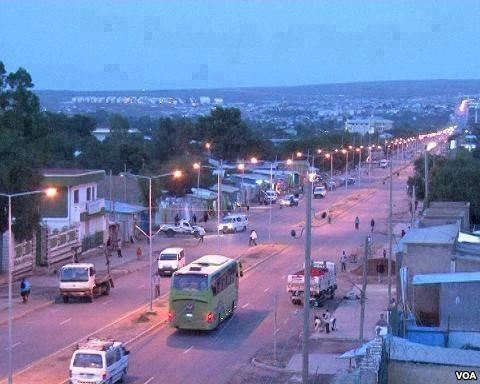By Faisal A. Roble
Preamble
In part one of this series, Prelude to a Revolutionary Generation, I discussed factors that partly contributed to the political consciousness of the youth of Jigjiga. I also ruminated about the influence of dissident poets and Musicians from Somalia. Remarkable about this crop of dissidents (Abdi Adan Qays, Hadrawi, Said Salah, Gaariye) was how they used the epic poems of Siinlay to express the socio political challenges in governance in the Somali society.
In this section (Part II), I will do a cursory review of the history, architectural and political development of Jigjiga, to be followed by Part III, where I will appraise the genesis of the 1974 Ethiopian revolution and the demise of the feudal system from a Somali perspective. I will argue that with the demise of feudalism ended the idyllic life style of the youth, and the awakening of the Somali youth was born. Part IV will appraise the challenges of joining the now-defunct Western Somali Liberation Front (WSLF), and the ensuing death of a revolutionary era.
Changing Political Landscape in Jigjiga
 On December 8, 2013, a large delegation from Somali speaking regions in the Horn of Africa converged into Jigjjga. Delegates were from Djibouti, Kenyan Somalis, and the Federal Government of Somalia as represented by Mogadishu, Puntland, Somaliland, and Jubbaland); this is how the political geography of post 1991 Somali speaking nation looks like. Each delegation came on its own and participated the 8th annual commemoration day for nations, nationalities and peoples in post-Dergi Ethiopia. Were the Somalis there to be shown how different nationalities coexist, or to show their own regional relationship to the Jigjijga administration? Nonetheless, the presence of Somali leaders in Jigjiga calls for a sober revisiting of the political conditions of the city 40 years ago. The political gap between now and then would provide a context for the historical contours through which Jigjiga had travelled in the last 150 years.[i]
On December 8, 2013, a large delegation from Somali speaking regions in the Horn of Africa converged into Jigjjga. Delegates were from Djibouti, Kenyan Somalis, and the Federal Government of Somalia as represented by Mogadishu, Puntland, Somaliland, and Jubbaland); this is how the political geography of post 1991 Somali speaking nation looks like. Each delegation came on its own and participated the 8th annual commemoration day for nations, nationalities and peoples in post-Dergi Ethiopia. Were the Somalis there to be shown how different nationalities coexist, or to show their own regional relationship to the Jigjijga administration? Nonetheless, the presence of Somali leaders in Jigjiga calls for a sober revisiting of the political conditions of the city 40 years ago. The political gap between now and then would provide a context for the historical contours through which Jigjiga had travelled in the last 150 years.[i]
The coincidence of such a commemorative festive occasion and the unveiling of an impressive Bronze statue erected in the center of Jigjiga in memory of the anticolonial leader of the early 20th century, Sayyid Mohamed Abdullah Hassan, must be treated as more th
1) The statue for Sayyid Mohamed Abdulle Hassan in Jigjigja replaced Dajasmaj Afaworke’s unpopular statue that stood up until recently in the center of the city. Dajasmaj Afaworke was a noted feudal lord who served Haile Selassie in the 1940s to put Somalis under servitude and oversaw a historic massacre carried out in the Qorahay region;[i] Afaworke’s statue was a constant reminder of colonialism and social injustice in the region. Its replacement with the statue of Sayyid Mohamed Abdule Hassan as the symbol for local historical recognition is perhaps a reminder that Somalis in Ethiopia have travelled a long way, and may even go farther to seize the promise stipulated in Article 39 of the Ethiopian constitution – the right of nations and nationalities to self-determination, including and up to secession (Ethiopian Constitution, 1994).
2) The original monument for Sayyid Mohamed in Mogadishu (left picture) is destroyed and its wreckages were sold as scrap metal to Arab countries. In the aftermath of the 1991 civil war, coupled with entrenched clan politics, national statues such the one for Sayyid Mohamed Abdulle Hassan could not resurrect again inside Mogadishu, at least not yet. Mogadishu at this juncture appears to have lost the capacity to house pan-Somali national symbols.
Read more: Jigjiga past and present Part II
Faisal A. Roble
Email: faisalroble19@gmail.com

Leave a Reply